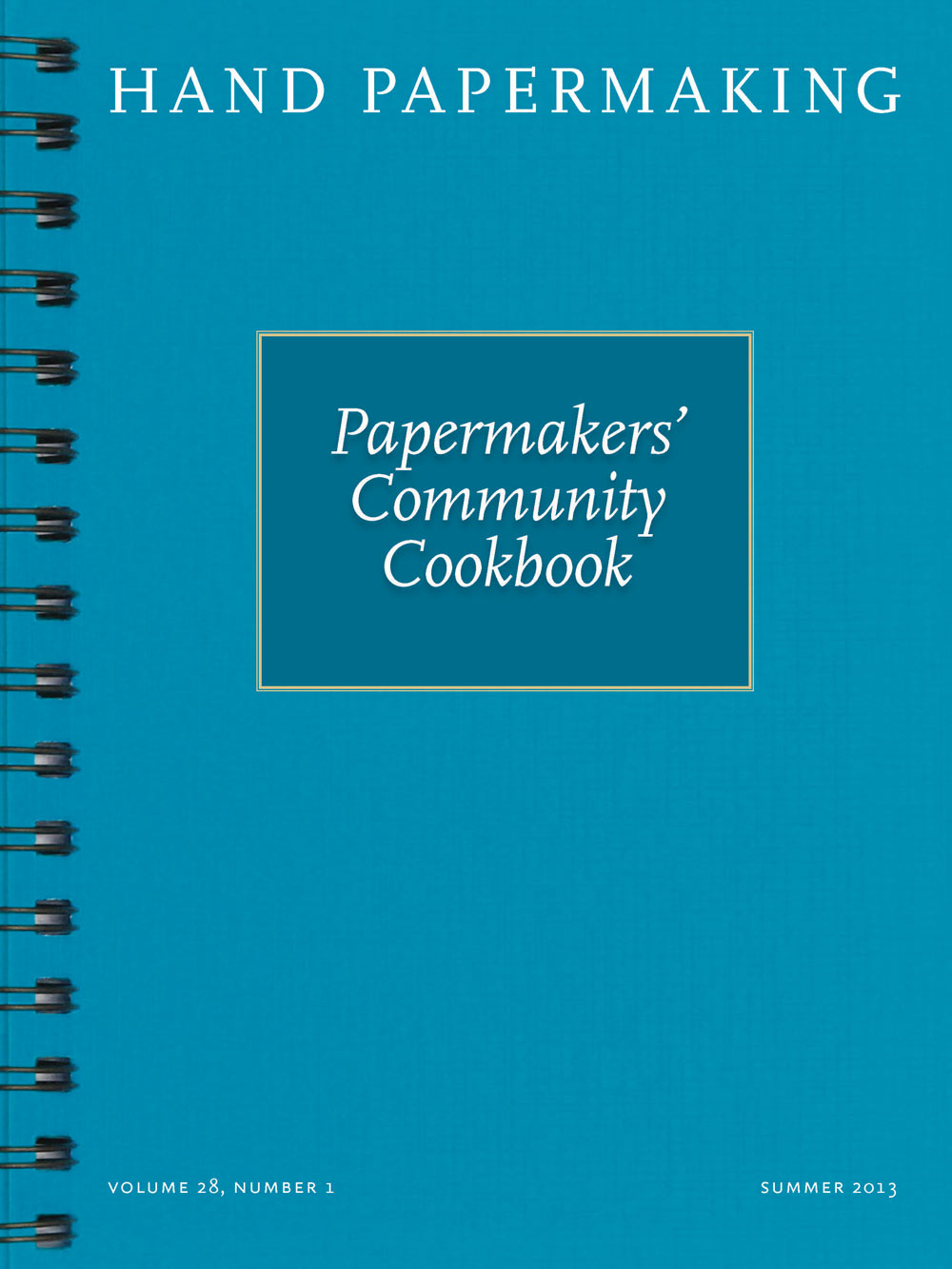Partly cloudy skies and mild temperatures made it a perfect day for the outdoor event. I was rushing to deliver supplies when something made me stop—to take it all in. (Deep breath.) A buzz of conversation, mixed with laughter and live music, created a festive atmosphere. In the background, the Oracle beater provided a steady rhythm as it pulped its way through repurposed hospital gowns. Matott and Mahan were demonstrating various papermaking techniques. Art therapists and artists in residence were paying close attention to their dipping, couching, and pulp printing, faces aglow with new ideas. Caregivers were also present, invited to take a respite from the stress of their daily vigil with a hospitalized loved one. Some were content to find a sunny spot and "chill" while others were busy pulling sheets, enjoying the opportunity to play with this new medium. A number of hospital patients were there too, braving the outdoors with their portable IVs. This was intense. One of them was a teenage girl. With hair tucked into a knitted beret and hiking boots visible just below her hospital gown, she seemed oblivious to her tethered IV as she pulled a sheet of paper, and shared a joke with Mahan in the warm sun. (Another deep breath.) At that moment I realized I was witnessing healing arts in action, a discipline I have become increasingly interested in. I found myself mentally assembling a checklist of required ingredients, a recipe of sorts. There were "nuts-and-bolts" ingredients, the first being a portable beater that allows participants to see their own fabric being transformed into a new substrate for expression. Other necessities: a minimum of four vats, six to eight sets of moulds and deckles, a variety of overbeaten pulps for pulp printing and painting, squirt bottles, and a wagon full of pre-cut Pellon felts and boards. (Check.) What about "interpersonal" skills? Matott and Mahan made it look so easy. Their cooperative, playful spirit and ability to problem- solve on the fly were inspiring. A sense of humor was another must, along with boundless energy and a knack for involving everyone, even those who were at first unsure about participating. (Hmmm. This was challenging work.) At the welcome session that morning, art therapist Amy Bucciarelli spoke about the importance of developing emotional resiliency. An invisible guard of some sort would be needed, to bolster oneself from compassion fatigue. Was this something I could do? Little did I know, within Artist-in-residence Madeline Austin cuts pieces of fabric (a hospital gown) and feeds it into the Oracle paper beater during a workshop conducted by the Peace Paper Project. Photo: Amy Bucciarelli weeks, I would have the opportunity try the recipe. Soon after the Peace Paper workshop, Bucciarelli and her colleague Genevieve Camp, an art therapist with the UF & Shands Eating Disorder Recovery Center approached me to facilitate a papermaking session for patients being treated for anorexia or bulimia. Camp's idea was to make paper from clothing they had outgrown during treatment and use it for a collaborative art therapy project. As part of an eating-disorder awareness campaign, she and her patients were going to decorate a full-figured mannequin— a symbol of positive body image and acceptance of the profound physical, mental, and emotional changes that occur during the healing process. They would call it Transfiguration: Making Peace with Our Bodies. Both therapists recognized the significance old clothing held for eating-disorder patients, and saw papermaking as a potentially powerful, healing mechanism. In Camp's words, "It seemed like a perfect way of dealing with those ‘skinny' jeans that no longer fit one's healthier body or were embedded with memories of a painful past." The initial deconstructive process of cutting and tearing material was inherently therapeutic. Patients shared what it was like to let go of the clothes and, through this exercise, a stronger sense of community was observed among the group. During the papermaking session a few days later, they created sheets of paper embedded with words generated from their group process: energy, peace, health, strength, and love. After the sheets were pressed and dried, they wrote letters to their bodies, which were fashioned into colorful beads. Other sheets were activated with drawings and used along with "plain" sheets to create a new garment for the mannequin. On the surface, Transfiguration represented a celebration of a larger, healthier body. However, as Camp later described, "It is about much more than changing one's outer appearance; it is about making peace with our bodies and revealing the inner beauty and self-healing nature that is intrinsic to all human beings regardless of size." For everyone involved, it was the beginning of something exciting, with hand papermaking as a main ingredient. The author wishes to acknowledge Genevieve Camp and Amy Bucciarelli for their contributions to this article. A short video about the project can be found online at http://www. youtube.com/watch?v=dRroDVs8QZQ. Ed.






